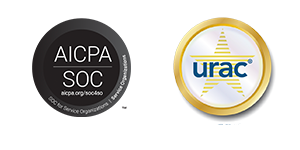Table of Contents
Suicide is the 10th leading cause of death in the U.S. and the 2nd leading cause of death among teenagers. The Mayo Clinic also cites suicide as the second-leading cause of death in young people ages 20 to 24. Additionally, data from the American Academy of Sleep Medicine (AASM) shows that suicides are more likely to occur between midnight and 4:00 a.m. compared to daytime or evening hours. These stats raise an important question for higher education professionals: does your after-hours mental health care provide the support students need?
Why are 24/7 suicide prevention resources needed?
Crisis can strike anytime
Mental health challenges don’t adhere to regular business hours. People experiencing suicide ideation may feel most vulnerable during the late hours of the night when conventional support services may be unavailable, increasing the risk of a suicide attempt. Having 24/7 suicide prevention resources ensures that help is accessible whenever it’s needed, offering a lifeline during critical moments.
Reduce immediate risk
Immediate support during a crisis can significantly reduce the risk of suicide. Timely interventions, such as talking with a crisis counselor or helpline, provide essential emotional support and coping strategies, helping individuals find reasons to hold on to hope. Research from the 988 Suicide & Crisis Lifeline, formerly known as the National Suicide Prevention Lifeline, reveals that lifeline calls leave callers feeling less depressed, less suicidal, less overwhelmed, and more hopeful after speaking with a lifeline counselor.
Stigma reduction
The availability of 24/7 resources sends a powerful message that seeking help for mental health challenges is encouraged and supported. This can contribute to reducing the stigma surrounding mental health issues and encourage more people to reach out for assistance. Despite significant progress in recent years to normalize mental health care, there remains a stigma for some students associated with simply walking into a counseling center or clinic. As such, virtual care that can be accessed at home or in a residence hall helps to remove that stigma, facilitating suicide prevention.
What are the impacts of 24/7 suicide prevention resources?
Save lives
The most significant impact of 24/7 suicide prevention resources lies in their potential to save lives. When individuals in crisis have access to immediate support, a compassionate voice on the other end of the line can provide hope, empathy, and reassurance that someone cares and is willing to listen. This can make a profound difference in a person’s darkest moments, ultimately saving lives. A compassionate voice on the other end of the line can provide hope, empathy, and reassurance that someone cares and is willing to listen, making a profound difference in their darkest moments.
Promote early intervention
24/7 resources promote early intervention, which can prevent the escalation of mental health challenges. By offering support at the onset of distress, these resources can help individuals before their situation becomes more critical, fostering a proactive approach that can lead to brighter outcomes.
Provide continuous support
Mental health issues do not adhere to a 9-to-5 schedule. 24/7 resources and provide a safety net for those who may experience fluctuating emotions and needs, and ensure that individuals have continuous access to support and assistance, reinforcing the importance of ongoing mental health care.
24/7 mental health care saves lives.
How can colleges and universities implement 24/7 suicide prevention resources?
Collaborate with mental health organizations
Schools can strengthen their support system by collaborating with reputable mental health organizations, like TimelyCare, which offers a 24/7 Crisis Line and integrated crisis support. These valuable partnerships ensure that students and staff have access to professional assistance whenever needed.
Empower through training and education
Empowering faculty, staff, and students with training on recognizing the signs of distress and appropriate responses is crucial for creating a compassionate and understanding school community. By providing comprehensive education on mental health and suicide prevention, schools can build a network of empathetic individuals who can offer support when needed.
Use online resources and hotlines
Recognizing the diverse nature of students’ schedules and personalities, educational institutions can embrace the power of online platforms and hotlines that offer 24/7 support. These resources prove particularly beneficial for college students and those engaged in online learning, ensuring they have immediate access to help and support during challenging times, bridging the gap, and reaching those who may not have access to on-campus resources.
As we commemorate National Suicide Prevention Awareness Month, we must emphasize the significance of 24/7 suicide prevention resources. Crisis situations don’t always happen during regular hours, and timely support can make a life-saving difference. By providing accessible and continuous resources, we can work toward reducing the risk of suicide.
Care delivered through telehealth is fast, easy, and efficient. It eliminates wait times, reduces the stigma of seeking care, and is available at the moment a student needs care. Telehealth helps eliminate the days or weeks many students typically have to wait for an on-campus counseling center appointment. With telehealth, the appointment is when and where they need it.
Contact TimelyCare to learn how 24/7 crisis resources can make a difference in the lives of your students.
Want to learn more about TimelyCare’s 24/7 Crisis Line? Visit timelycare.com/crisis-line/






